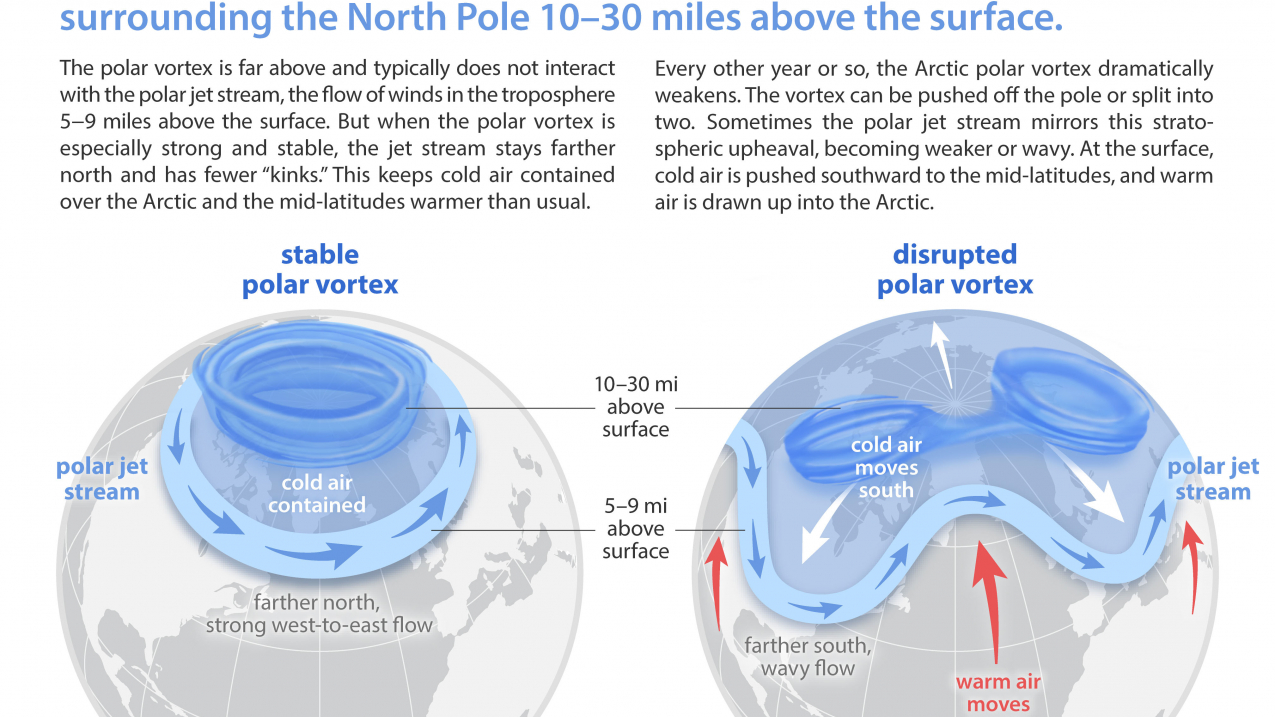
The science behind the polar vortex. (Image credit: NOAA)
The polar vortex is a large circulation of low pressure and cold air that forms every winter in the stratosphere above the North and South poles. The term vortex refers to the counter-clockwise flow of air that helps keep colder air close to the poles (left globe in graphic).
Sometimes during winter in the Northern Hemisphere, the polar vortex will become less stable and disrupt the polar jet stream circulating in the same direction miles below the vortex — thus sending cold Arctic air southward over the United States (right globe).
The polar vortex is nothing new: In fact, it's thought that the term first appeared in an 1853 issue of E. Littell's Living Age.
For more, see this polar vortex explainer from NOAA's Climate.gov.
Updated 3/8/2021: Story has been refreshed with new, more detailed graphic and text explanation.

